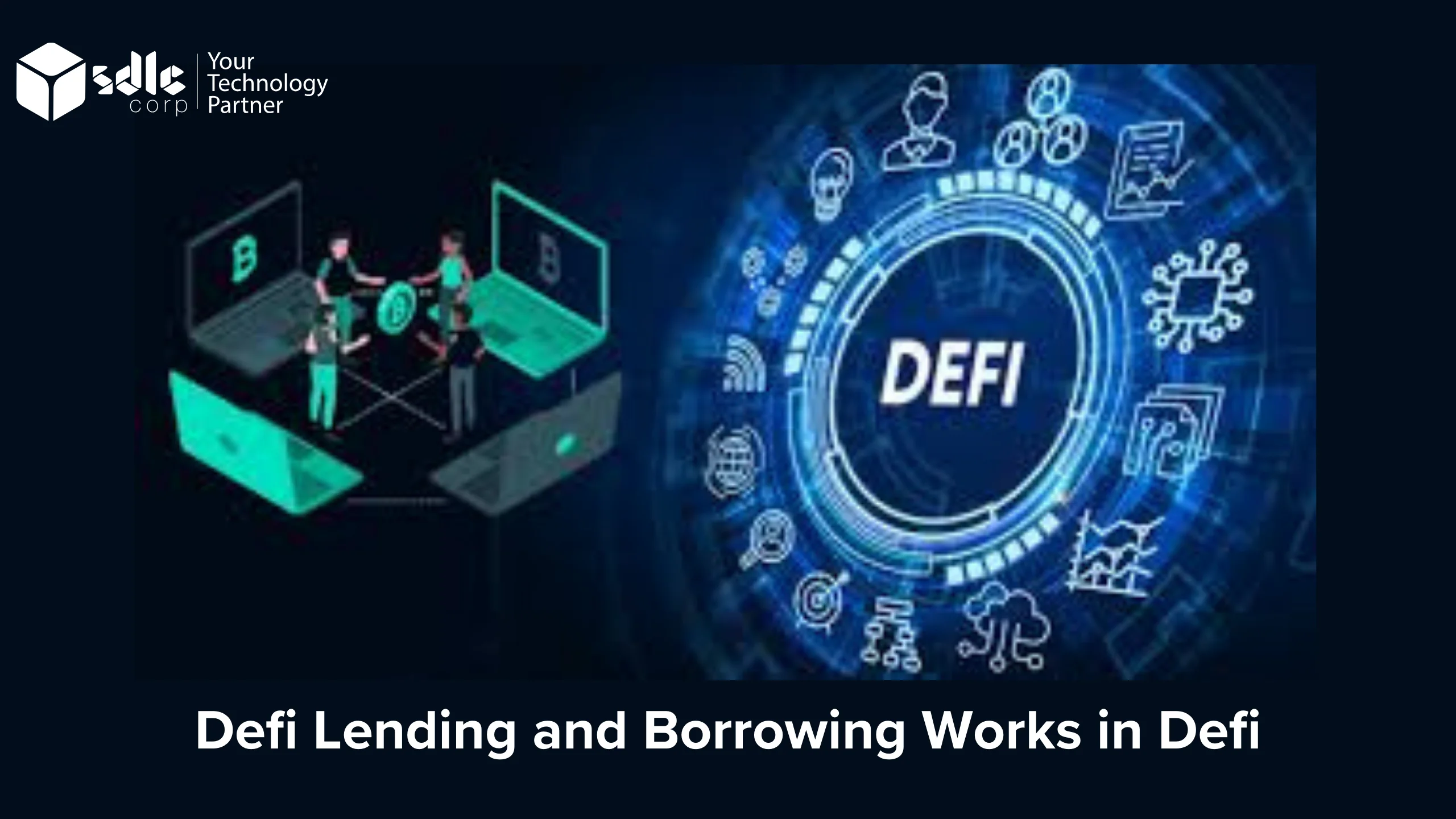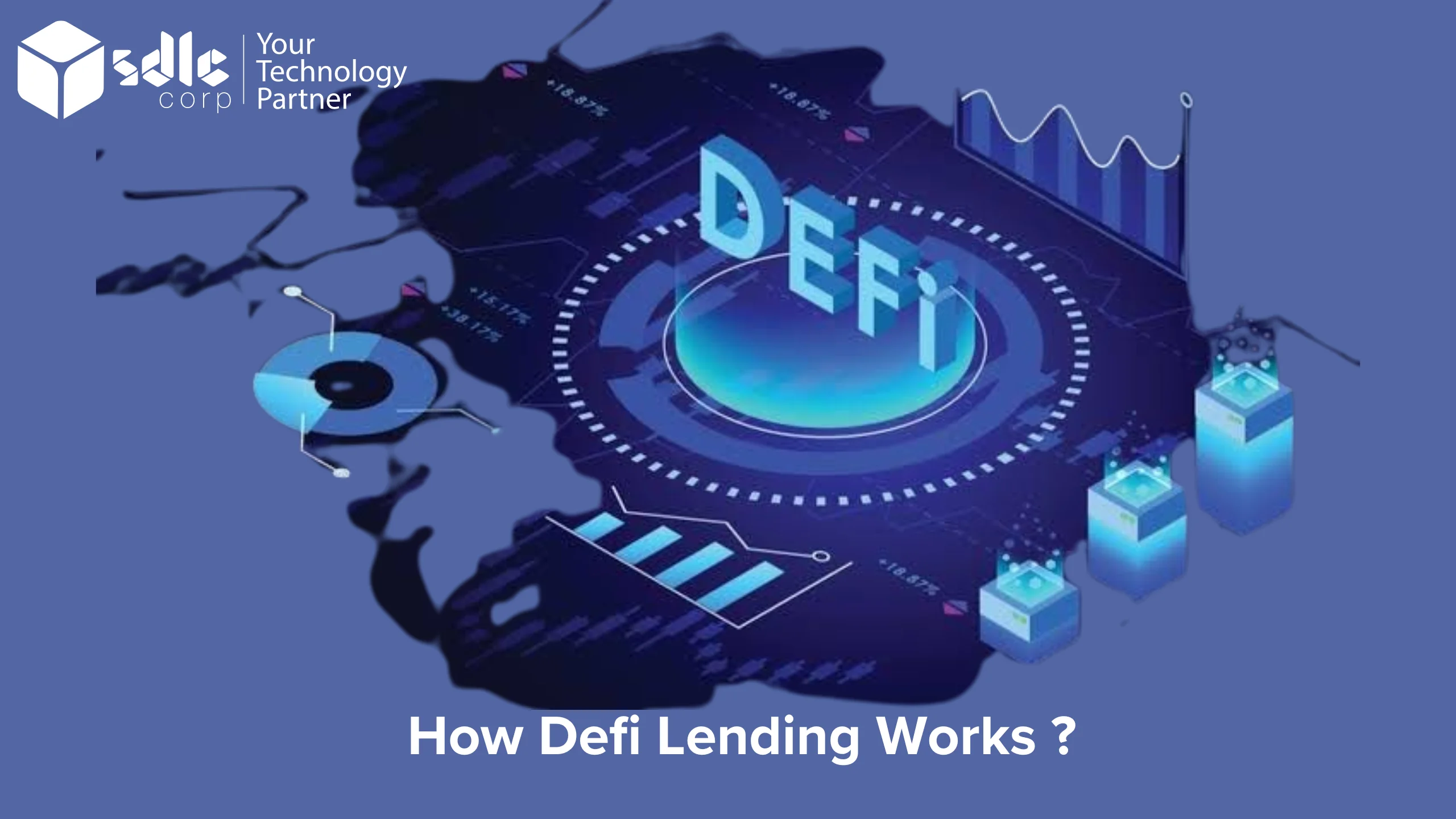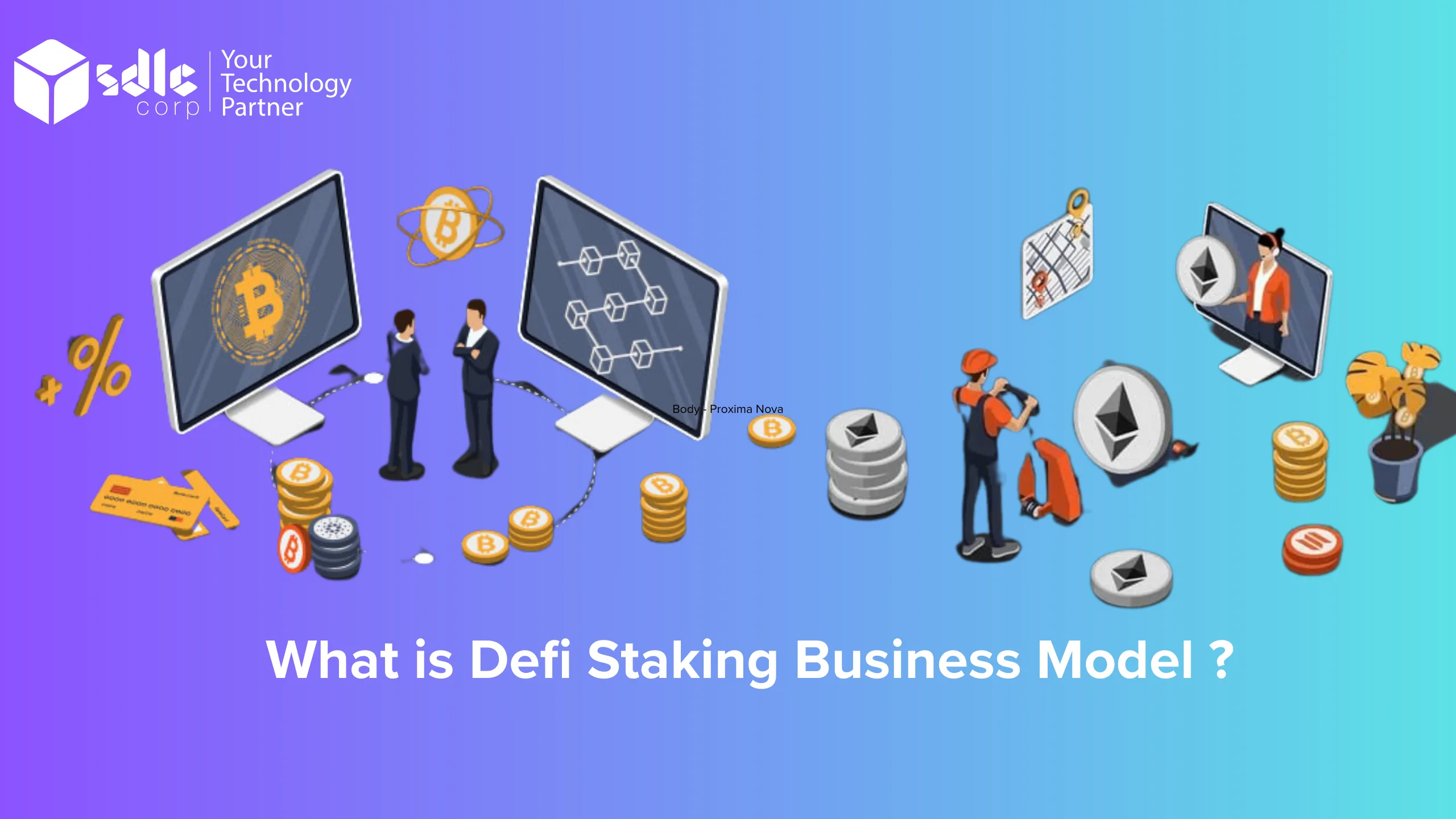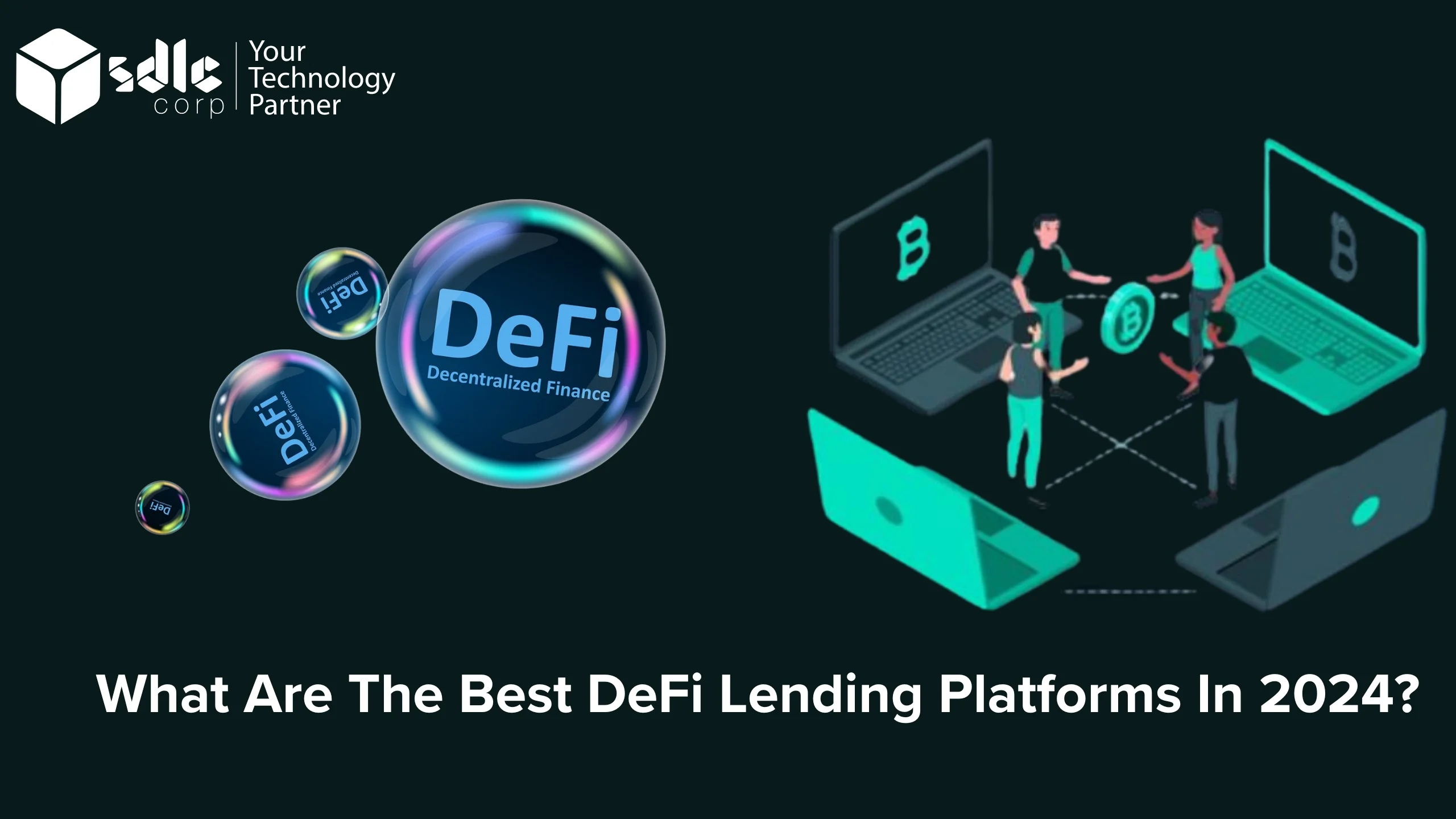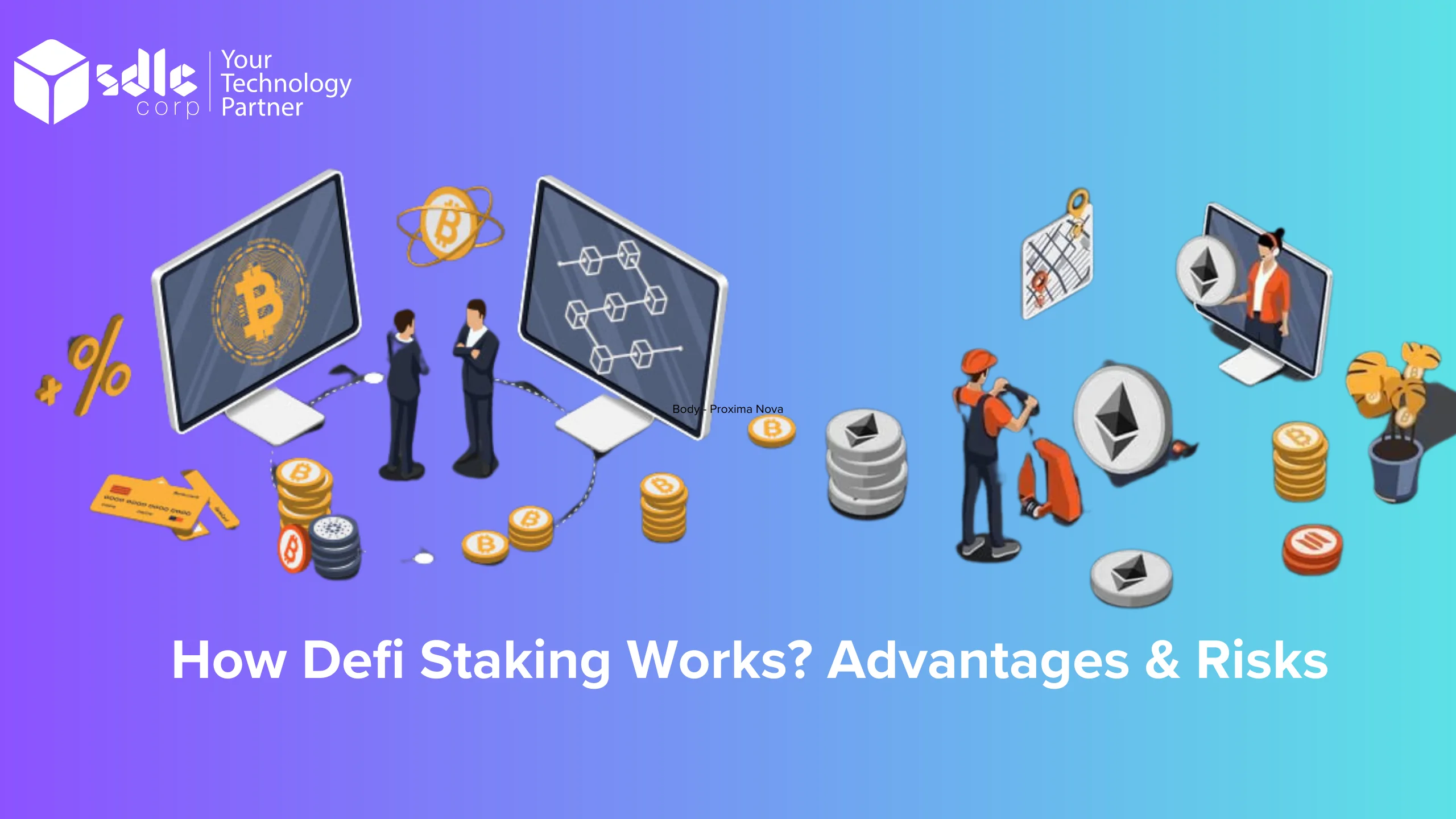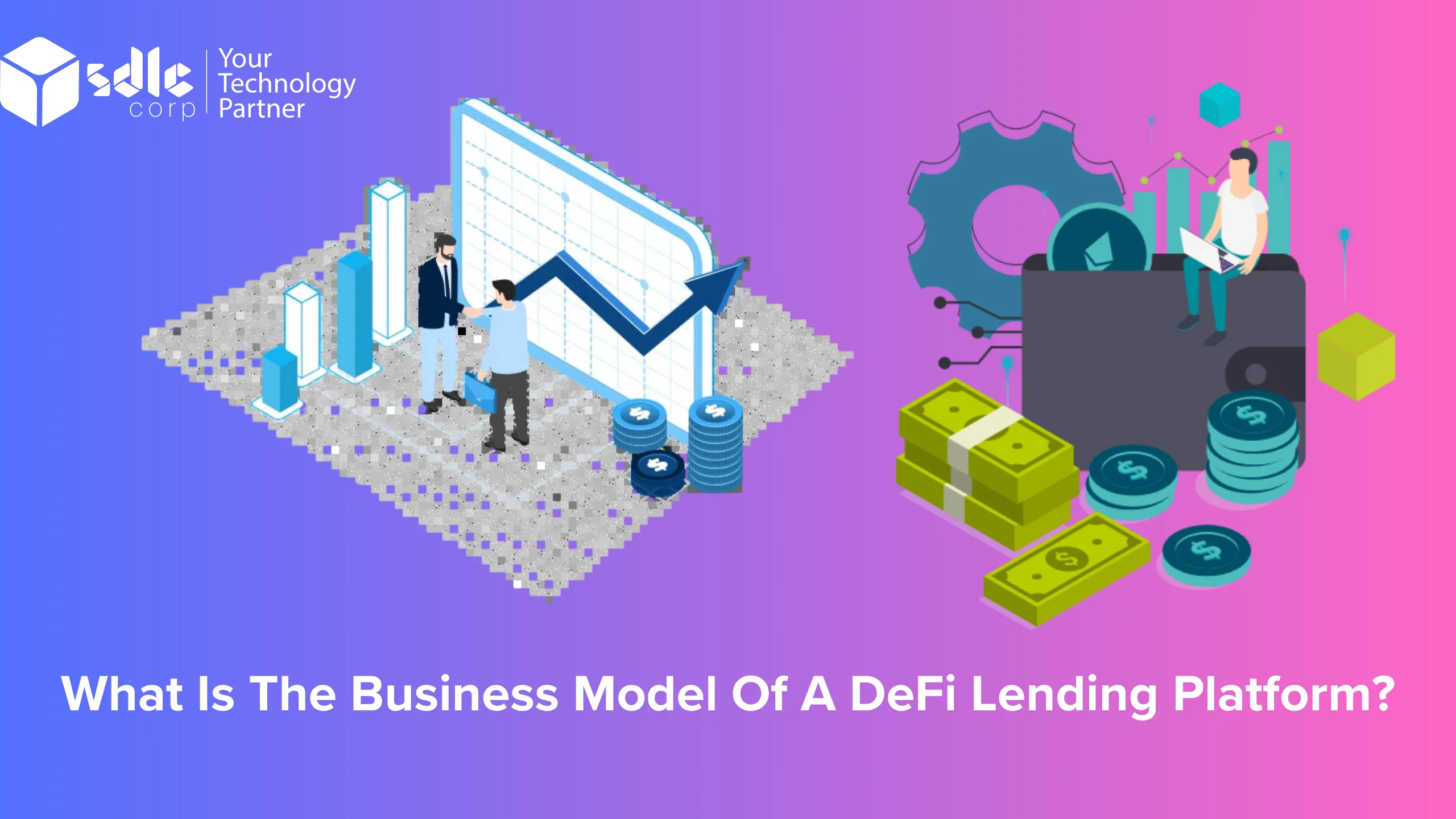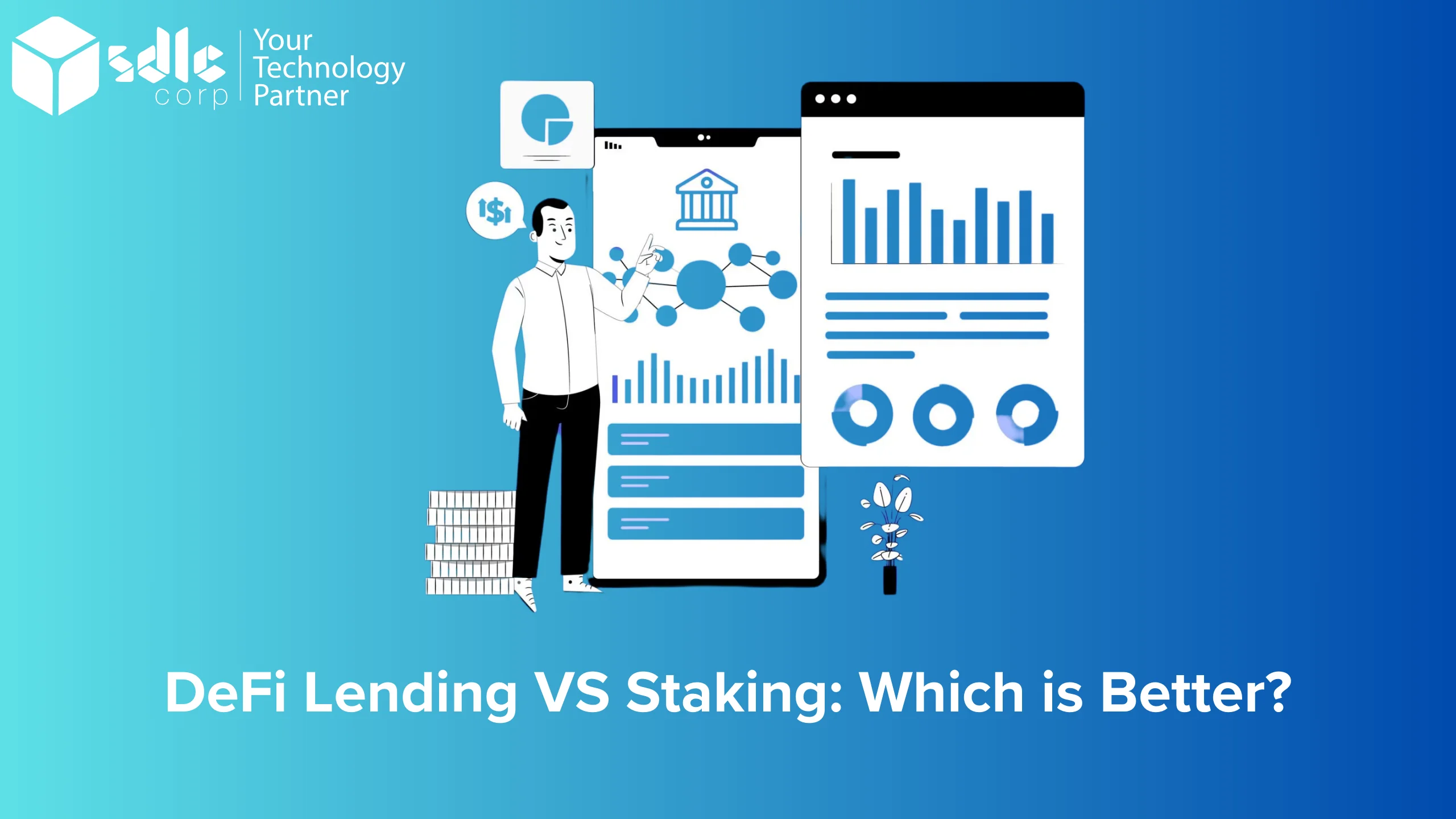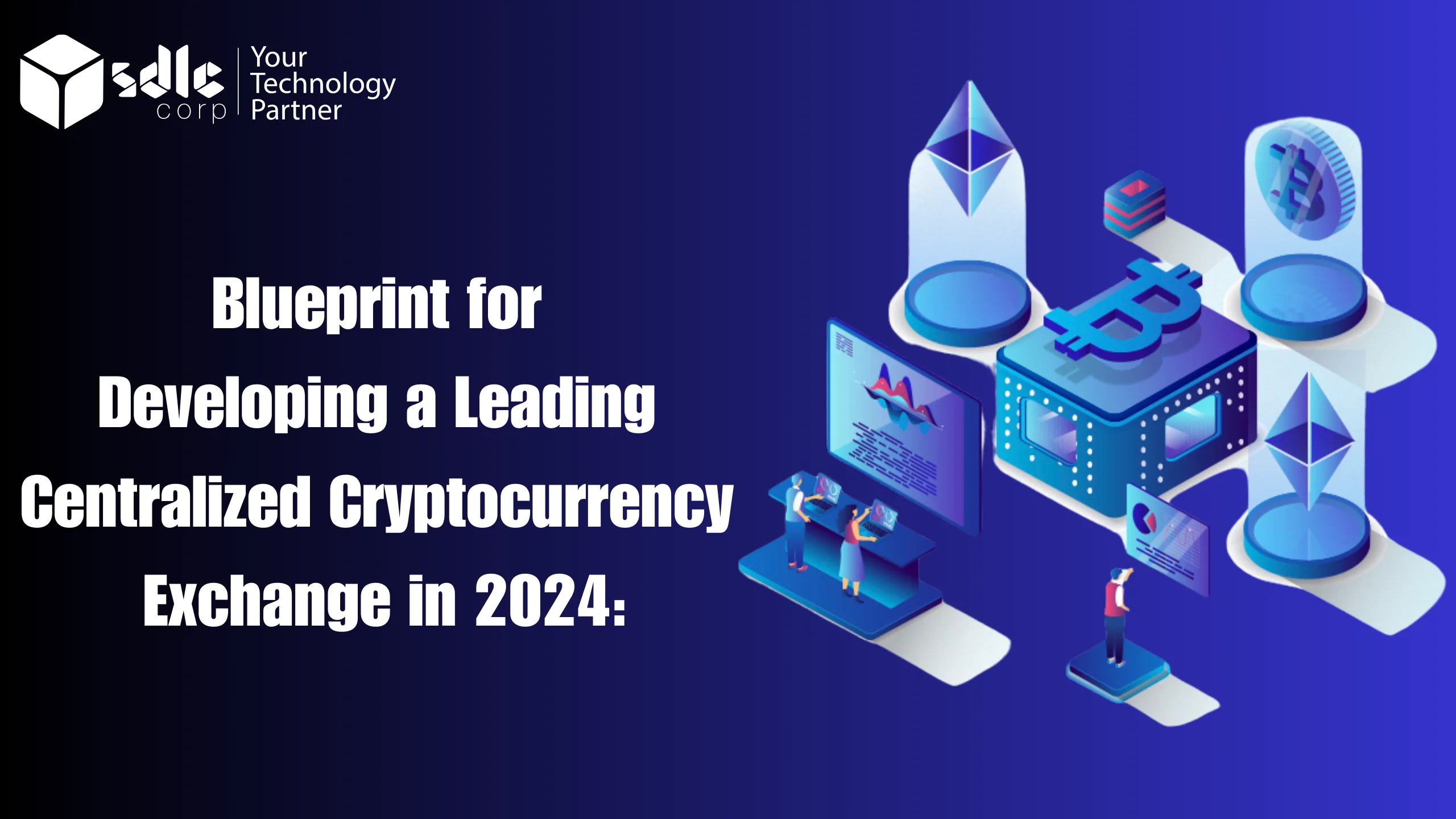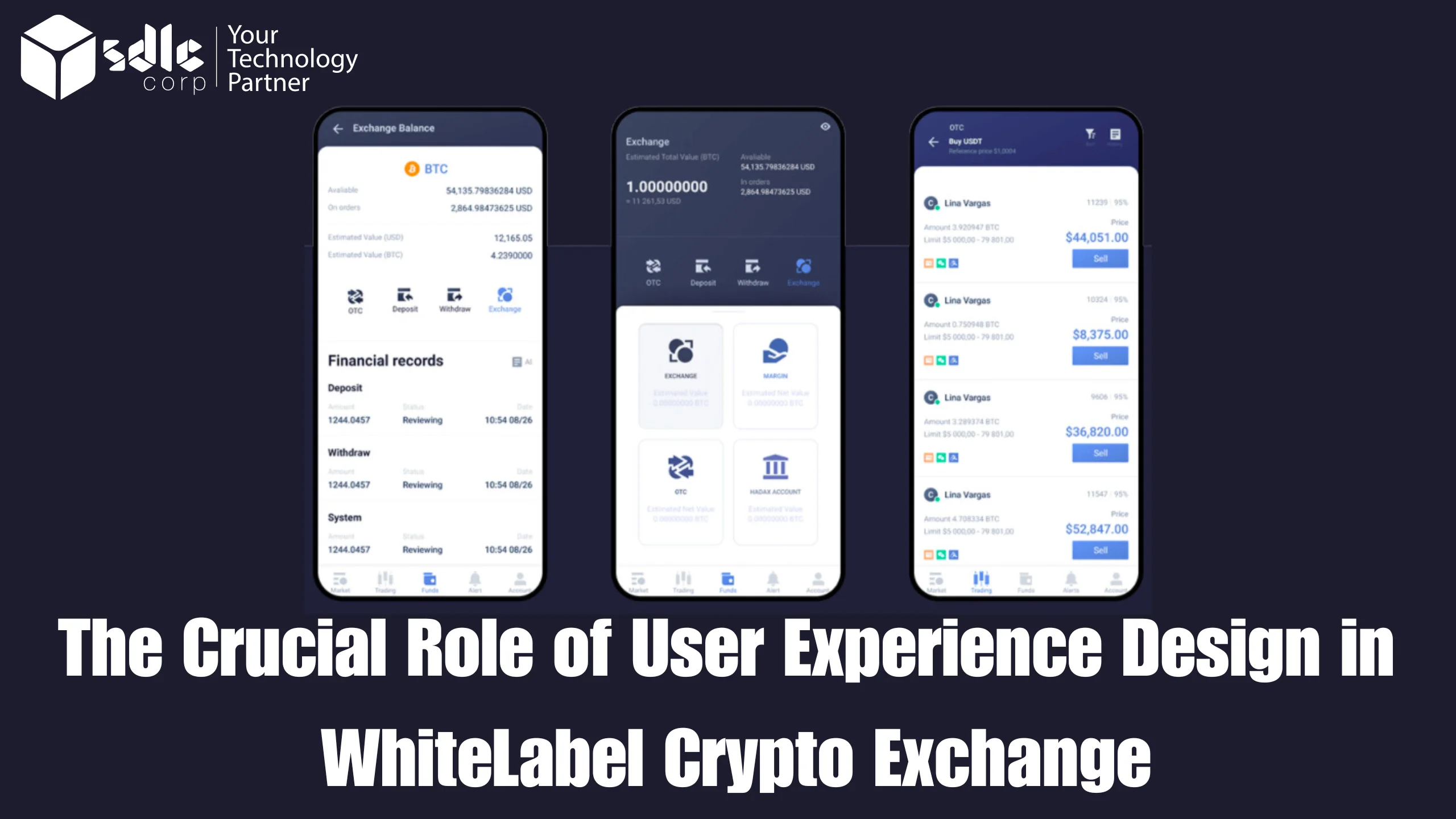How does lending and borrowing work in decentralized finance (DeFi)?
DeFi lending and borrowing in decentralized finance (DeFi) involve users lending their digital assets to earn interest or borrowing assets by providing collateral, all without traditional intermediaries like banks. This process is managed by smart contracts on blockchain networks, ensuring transparency, security, and automation. DeFi lending platforms pool deposited assets from lenders and lend them to borrowers, who must over-collateralize their loans. For businesses aiming to enter this innovative space, partnering with a DeFi lending platform development company can provide the necessary expertise and technology to build secure and efficient platforms, allowing them to offer cutting-edge financial services to a global user base.
How do borrowing and lending work in DeFi?
Borrowing and lending in decentralized finance (DeFi) operate through blockchain-based smart contracts, eliminating traditional intermediaries like banks. Users can lend their crypto assets to earn interest or borrow assets by providing collateral. Lenders deposit assets into liquidity pools, which borrowers can access, with interest rates set by supply and demand dynamics. This system enhances efficiency, transparency, and accessibility in financial services. Partnering with a DeFi staking platform development company can help businesses create secure and scalable platforms, enabling users to earn rewards while participating in network security and governance.
How DeFi borrowing works
Crypto staking involves locking up a specific amount of cryptocurrency in a blockchain network to support its operations and secure the network. Participants, known as validators, are rewarded with additional cryptocurrency for their efforts. Staking typically involves holding coins in a staking wallet or participating in a staking pool.

How DeFi lending works
DeFi lending allows users to use decentralized platforms to lend their cryptocurrencies directly to others, eliminating the need for traditional financial intermediaries. Borrowers provide collateral in digital assets to secure loans, while lenders earn interest on their deposited funds. Smart contracts ensure transparency and automate lending and borrowing, enhancing security and efficiency.
Defi lending and borrowing combined
DeFi lending and borrowing revolutionises financial services by enabling users to lend and borrow assets without intermediaries through decentralized platforms. Utilizing intelligent contracts ensures transparent, secure, and efficient transactions, offering higher yields for lenders and flexible terms for borrowers. This innovation democratizes access to financial services and promotes financial inclusion.
How do lending and borrowing work on DeFi platforms?
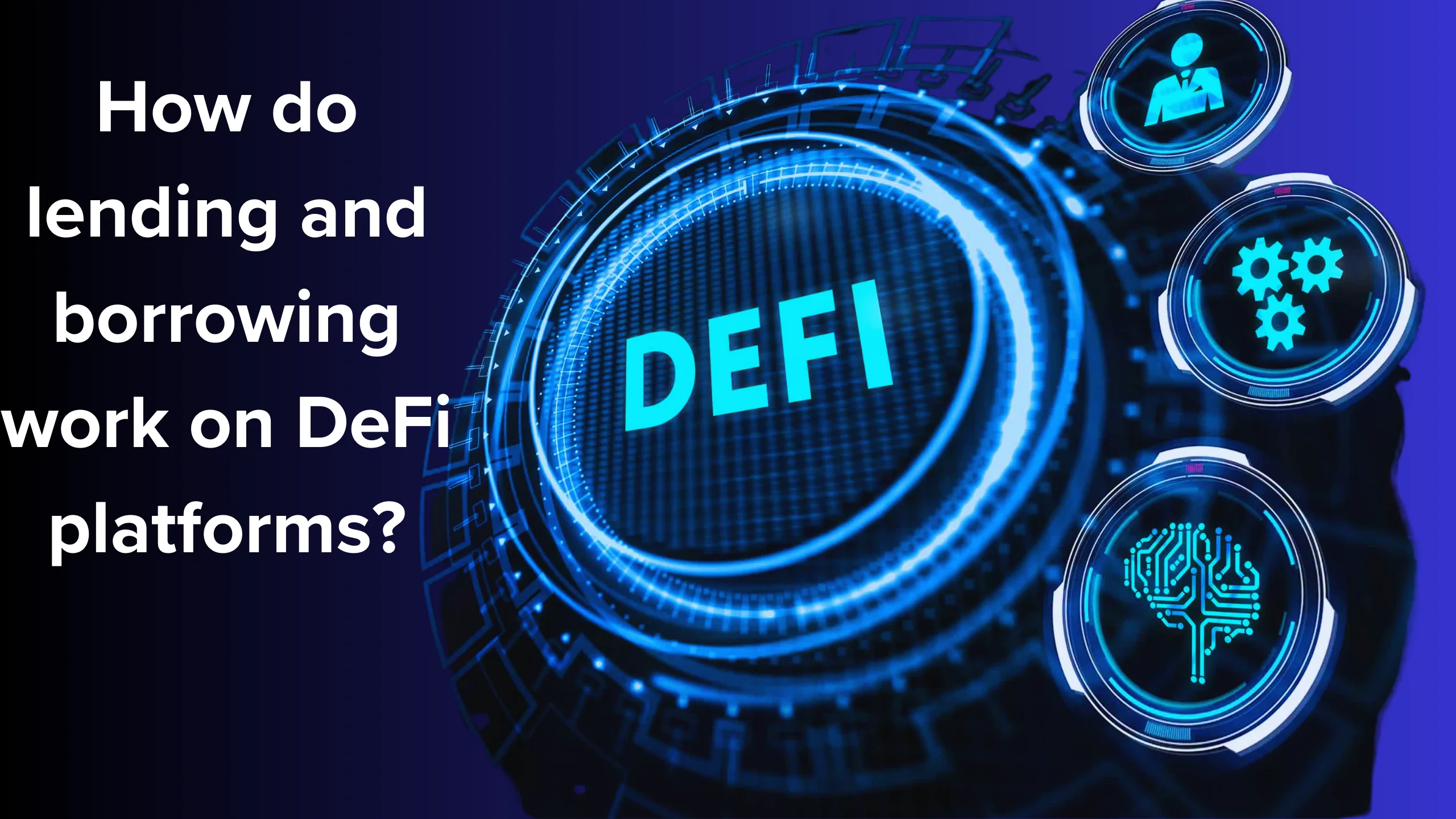
Lending and borrowing on DeFi platforms operate through decentralized mechanisms where lenders deposit assets into a pool, earning interest governed by smart contracts. Borrowers must provide collateral to secure loans from this pool, usually exceeding the loan value. Smart contracts automate interest calculations and repayments, ensuring transparency and efficiency. These platforms offer accessible, transparent, and cost-effective financial services compared to traditional systems. Partnering with a proficient DeFi development company enables businesses to create secure, compliant, and user-friendly DeFi lending and borrowing solutions, leveraging blockchain technology to attract a broader user base and build trust in the decentralized financial ecosystem.
What are the mechanics of how interest returns are doled out in DeFi? Are there any risks involved?
Decentralized Finance (DeFi) platforms offer innovative ways for users to earn interest on their cryptocurrency holdings. However, these opportunities come with certain risks. Below, I’ll outline the mechanics of how interest returns are doled out in DeFi and discuss the associated risks
Mechanics of Interest Returns
1. Liquidity Pools
Users provide liquidity by depositing their assets into pools, which are used for various financial activities like lending and trading. Interest generated from these activities is distributed proportionally to liquidity providers.
2. Lending and Borrowing
Users can lend their assets to borrowers for interest. Interest rates are determined by supply and demand within the platform. Borrowers pay interest on the borrowed assets, which is distributed to lenders.
3. Yield Farming
Users provide liquidity to DeFi protocols in exchange for rewards, often as additional tokens. These rewards come from transaction fees, interest, or newly minted tokens.

4. Staking
Users lock up their tokens to support network operations and earn rewards, typically paid as additional tokens. Staking enhances network security and functionality.
5. Interest Rate Models
DeFi protocols use various interest rate models, including stable rates (fixed), variable rates (fluctuating based on market conditions), and algorithmic rates (adjusted automatically based on protocol dynamics).
6. Compounding
Many crypto lending platforms operate on decentralized protocols, ensuring transparency, security, and reduced risk of centralized control or manipulation.
7. Governance Tokens
Crypto lending platforms are accessible globally, allowing users from different regions to participate without the restrictions often imposed by traditional financial institutions.
8. Fee Distribution
DeFi platforms charge fees for transactions, lending, and other activities. A portion of these fees is distributed to liquidity providers and takers as interest returns.
Risks Involved
1. Smart Contract Risks
DeFi platforms operate using smart contracts, which are susceptible to bugs, vulnerabilities, and hacks. Users may lose their funds due to exploits or vulnerabilities in the code.
2. Market Risks
DeFi protocols are subject to market risks, including volatility in cryptocurrency prices, fluctuations in interest rates, and changes in demand for borrowing and lending.
3. Liquidity Risks
Users may encounter liquidity issues, especially in smaller or less established DeFi platforms, affecting their ability to withdraw funds or execute trades.
4. Regulatory Risks
DeFi operates in a regulatory gray area, and regulatory changes or crackdowns could impact the legality and availability of DeFi services in certain jurisdictions.
5. Counterparty Risks
Users interact with other participants in DeFi platforms, and there is a risk of default by borrowers or other counterparties, leading to lender funds loss.
6. Impermanent Loss
Liquidity providers may experience impermanent loss, where the value of their assets in the liquidity pool diverges from their initial investment due to price fluctuations.
7. Protocol Risks
DeFi protocols may have governance issues, protocol upgrades, or changes in protocol parameters that could impact users’ returns or participation.
8. Scam Risks
DeFi’s decentralized nature makes it a fertile ground for scams and fraudulent schemes, and users may unknowingly interact with malicious actors or Ponzi schemes.
Advantages & disadvantages of defi lending & borrowing
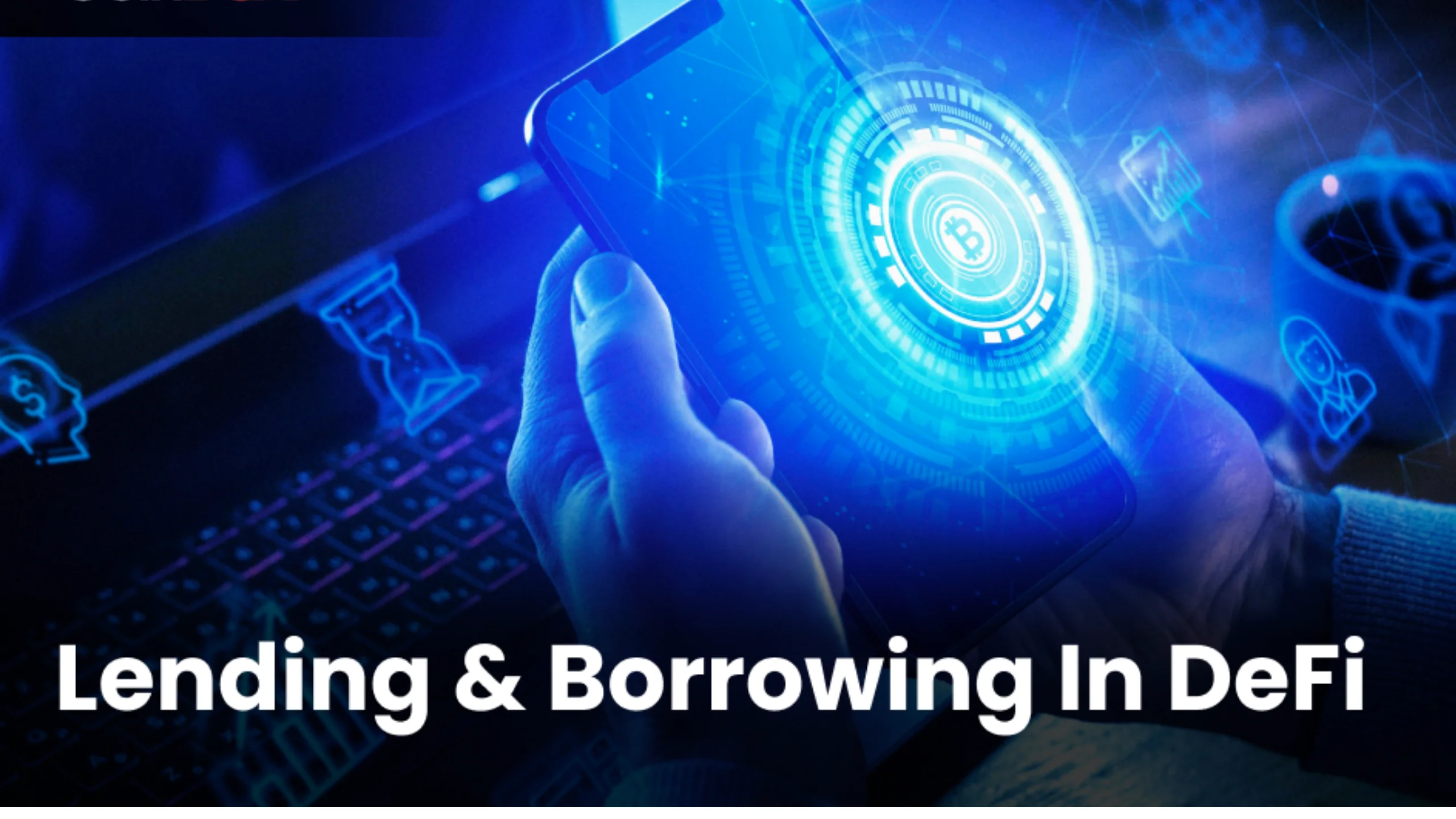
Advantages of DeFi Lending and Borrowing
1. Decentralization
DeFi lending and borrowing operate on blockchain networks, removing the need for intermediaries like banks. This decentralization fosters trustless transactions and gives users more control over their funds.
2. Accessibility
DeFi platforms are accessible to anyone with an internet connection and a compatible wallet, democratizing access to financial services. Users worldwide, including the unbanked, can participate in lending and borrowing activities.
3. Lower Barrier to Entry
Traditional financial institutions often impose high barriers to entry, such as credit checks and collateral requirements. DeFi lending platforms typically have lower entry barriers, allowing users to borrow or lend with minimal restrictions.
4. Transparency
Transactions on blockchain networks are transparent and immutable, giving users greater visibility into the lending and borrowing process. This transparency builds trust and reduces the risk of fraud or manipulation.
5. Customizable Terms
DeFi lending protocols often allow users to customize loan terms, such as interest rates, collateral types, and loan durations. This flexibility enables borrowers to tailor loans to their needs and risk preferences.
6. Global Market Access
DeFi lending and borrowing operate globally, allowing users to access diverse assets and markets. Users can lend or borrow various cryptocurrencies and stablecoins without geographic limitations.
7. Innovative Products
DeFi platforms continuously innovate and introduce new financial products and services, such as flash loans and decentralized derivatives. These innovative products offer users unique opportunities to optimize their financial strategies and maximize returns.
Disadvantages of DeFi Lending and Borrowing
1. Smart Contract Risks
DeFi platforms use smart contracts to facilitate lending and borrowing activities. While smart contracts are designed to be secure, they are not immune to bugs or vulnerabilities. Exploiting these vulnerabilities can result in financial losses for users.
2. Volatility
Cryptocurrency markets are highly volatile, posing risks for lenders and borrowers. Fluctuations in asset prices can affect collateral values and loan repayments, leading to potential losses or liquidations.
3. Regulatory Uncertainty
DeFi operates in a gray area with unclear guidelines and regulations governing lending and borrowing activities. Regulatory changes or crackdowns could impact the legality and viability of DeFi platforms in certain jurisdictions.
4. Liquidity Risks
DeFi liquidity pools may experience liquidity shortages during high demand or market volatility periods. More liquidity can result in higher borrowing costs or delays in loan executions, impacting user experience and profitability.
5. Counterparty Risk
While DeFi platforms aim to minimize counterparty risk through decentralized protocols, there is still inherent risk associated with counterparties defaulting on loans or failing to provide adequate collateral. Users should conduct due diligence and assess counterparty risk before participating in lending or borrowing activities.
6. Scalability Challenges
Scalability remains a challenge for many DeFi platforms, leading to network congestion and high transaction fees during periods of peak demand. These scalability issues can hinder user experience and limit the scalability of DeFi lending and borrowing services.
7. Limited Customer Support
DeFi platforms often need more traditional customer support channels, making it easier for users to seek assistance or resolve issues promptly. Users may need help accessing support in the event of technical issues or disputes.

What are some of the most popular defi lending & borrowing protocols?
1. Aave
Aave is a decentralized lending protocol that allows users to lend and borrow a variety of cryptocurrencies. It pioneered the concept of flash loans, uncollateralized loans that must be repaid within a single transaction block. Aave’s lending pools utilize a variable interest rate model, dynamically adjusting interest rates based on supply and demand. Users can earn interest by depositing assets into these pools or borrow assets by providing collateral.
2. Compound
Compound is another leading DeFi lending protocol enabling users to borrow cryptocurrencies. It operates with algorithmically determined interest rates, adjusting them based on utilizing each asset’s lending pool. Compound supports a wide range of assets, including stablecoins and Ethereum-based tokens. Users earn interest by supplying assets to the Compound’s liquidity pools and can borrow against their supplied collateral.
3. MakerDAO
MakerDAO is a decentralized autonomous organization (DAO) that operates the Maker protocol, which enables users to generate Dai, a stablecoin pegged to the value of the US dollar, by locking up collateral in intelligent contracts. Users can borrow Dai by locking up Ethereum (ETH) assets as collateral. The interest rate, known as the Stability Fee, is set by MakerDAO governance and is paid when users repay their borrowed Dai.
3. Collateral Requirements
Explore the different types of collateral accepted for crypto loans. A reputable DeFi development company will guide you through the process of using various cryptocurrencies as collateral, ensuring you meet the necessary requirements.
4. dYdX
dYdX is a decentralized platform offering margin trading, spot trading, and lending services. It allows users to lend assets to a shared liquidity pool and earn interest on their deposits. Additionally, dYdX enables users to borrow assets against their deposited collateral for margin trading. The interest rates for lending and borrowing are determined by market demand and supply dynamics.
5. Compound Finance
Compound Finance is a decentralized lending platform that allows users to supply assets to liquidity pools, earn interest, and borrow assets by providing collateral. It employs an algorithmic interest rate model that adjusts interest rates dynamically based on utilizing each asset’s lending pool. Compound Finance supports various cryptocurrencies and tokens, making it a versatile platform for lending and borrowing.
6. Cream Finance
Cream Finance is a decentralized lending platform that offers lending, borrowing, and yield farming services. It operates similarly to Compound and Aave, allowing users to lend assets to liquidity pools and borrow assets by providing collateral. Cream Finance utilizes an algorithmic interest rate model and supports many cryptocurrencies and tokens.
When integrating such DeFi platforms into wallets, users can benefit from the services of specialized DeFi wallet development companies. These companies have expertise in building secure and user-friendly wallets that integrate seamlessly with various DeFi protocols, including Cream Finance. They ensure that users can access lending, borrowing, and yield farming services directly from their wallets, enhancing convenience and usability.
7. Venus
Venus is a decentralized lending and borrowing platform built on the Binance Smart Chain (BSC). It enables users to lend and borrow cryptocurrencies, including stablecoins and popular tokens like Binance Coin (BNB). Venus employs a collateralized lending model, where borrowers must provide collateral to borrow assets. Interest rates are algorithmically determined based on the supply and demand for each asset.
These protocols represent some of the most popular and widely used DeFi lending and borrowing platforms, offering users opportunities to earn interest on their assets or access liquidity through collateralized borrowing in a decentralized and permissionless manner.
CONCLUSION
In conclusion, decentralized finance (DeFi) lending and borrowing represent a transformative shift in the financial landscape, offering users unprecedented control over their assets and financial activities. Platforms like Aave, Compound, and MakerDAO have revolutionized traditional lending and borrowing by removing intermediaries and enabling direct peer-to-peer transactions through smart contracts. Algorithmic interest rate models ensure efficient capital allocation, while the security and transparency of blockchain technology mitigate risks associated with traditional financial systems. Integrating DeFi lending and borrowing protocols into wallets is essential for providing users with seamless access to these services, and specialized DeFi wallet development companies like ConsenSys and Trust Wallet play a vital role in this process. As the DeFi ecosystem continues to evolve, the development of DeFi crowdfunding platforms becomes increasingly important, and partnering with reputable DeFi crowdfunding platform development companies such as Polymath and DAO Maker can unlock new opportunities for decentralized fundraising and investment.
FAQs
What is the role of governance tokens in DeFi platforms?
Governance tokens allow users to vote on platform decisions, including interest rates and protocol upgrades.
How do I get started with DeFi lending and borrowing?
Start by choosing a reputable DeFi platform, create a wallet, deposit your assets, and follow the platform’s instructions.
What are the tax implications of DeFi lending and borrowing?
Tax implications vary by jurisdiction; consult with a tax professional to understand your liabilities.
How does liquidation work in DeFi borrowing?
Liquidation occurs when the value of the collateral falls below a required level, triggering the sale of collateral to repay the loan.
What are yield farming and liquidity mining in DeFi?
Yield farming and liquidity mining involve providing liquidity to DeFi platforms in exchange for rewards, often in the form of additional tokens.
Contact Us
Let's Talk About Your Project
- Free Consultation
- 24/7 Experts Support
- On-Time Delivery
- [email protected]
- +15106306507




